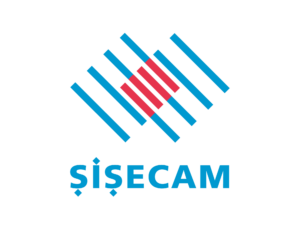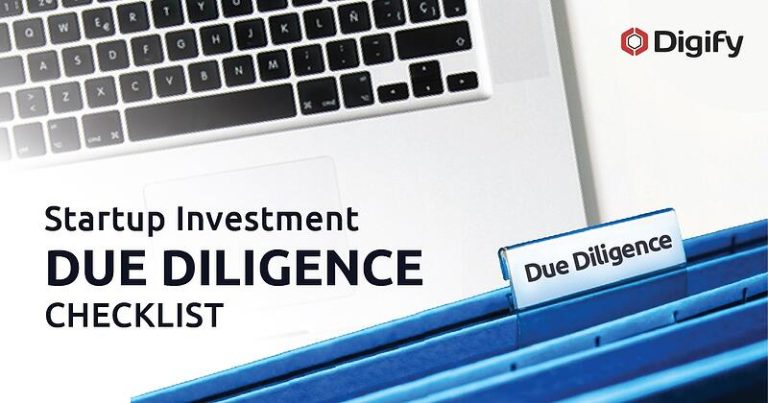Wenn Sie Risikokapital für Ihr Start-up beschaffen möchten, ist es wichtig, dass Sie eine Due Diligence zu diesem Thema durchführen. Wenn Sie die wichtigsten Punkte der Serie-A-Finanzierungsrunde kennen, können Sie Ihre Finanzierungsziele effektiver erreichen und sicherstellen, dass Sie Ihren Investoren die erforderlichen Informationen zur Verfügung stellen können.
Zu diesem Zeitpunkt organisieren Sie bereits Ihren virtuellen Datenraum für alle Dokumente zur Kapitalbeschaffung und Due Diligence. Bevor Sie sich jedoch mit Ihren Investitionszielen befassen, sollten Sie unbedingt die folgenden wichtigen Tipps beachten.
9 Dinge, die Gründer bei der Beschaffung von Serie-A-Finanzierung wissen sollten
- Die Bereitschaft für eine Serie-A-Finanzierung sieht möglicherweise anders aus, als Sie denken
- Das Timing ist entscheidend
- Networking ist entscheidend für den Erfolg
- Sie brauchen eine überzeugende Geschichte
- Ihr Pitch sollte flüssig und gut einstudiert sein
- Bereiten Sie Ihre Unterlagen frühzeitig vor
- Sie wollen den richtigen VC
- Ihre Vertragsbedingungen sind wichtig
- Schließen Sie schnell ab
Das Gesicht der Risikokapitalfinanzierung hat sich in den letzten Jahren erheblich verändert. Die Investoren von heute suchen nach ganz anderen Meilensteinen, bevor sie bereit sind, die für Ihr Unternehmen erforderlichen Mittel bereitzustellen. Indem Sie sicherstellen, dass Sie für die Serie-A-Finanzierungsrunde bereit sind und die wichtigsten Faktoren kennen, die zum Erfolg beitragen, verbessern Sie Ihre Chancen, mit den richtigen Investoren in Kontakt zu treten und diese vom Wert Ihres Unternehmens zu überzeugen.
Tipp Nr. 1: Die Bereitschaft für eine Serie-A-Finanzierung sieht möglicherweise anders aus, als Sie denken
Sie wissen, dass Sie mehr Risikokapital für Ihr Unternehmen benötigen, und Sie sind bereit, dafür einen Schritt weiter zu gehen – aber ist Ihr Unternehmen wirklich bereit, Risikokapital zu beschaffen? Viele Gründer stürzen sich in den Prozess, lange bevor das Unternehmen wirklich dafür bereit ist – und können dann möglicherweise nicht die benötigten Mittel sichern.
Die Meilensteine für diese Finanzierungsrunde unterscheiden sich stark von denen der Seed- oder Angel-Runden. Stellen Sie sicher, dass Ihr Unternehmen wirklich bereit ist, indem Sie auf diese wichtigen Merkmale achten:
- Sie haben ein tragfähiges Geschäftsmodell, das schnell skaliert und an die sich ändernden Anforderungen Ihres Unternehmens angepasst werden kann.
- Sie haben eine vielversprechende Unit Economics.
- Sie erzielen Einnahmen in einem Umfang, der geringer ist als der, den Sie mit den beantragten Mitteln erzielen können.
- Sie wissen, wo Ihr Produkt auf dem aktuellen Markt positioniert ist.
- Sie haben begonnen, Kunden zu gewinnen, und haben eine gute Vorstellung davon, wo Sie hingehen müssen, um mehr Kunden zu erreichen.
- Alle Ihre rechtlichen Dokumente und Compliance-Formulare sind in Ordnung und auf dem neuesten Stand.
Realistisch gesehen wissen Sie, dass Sie für die Serie A bereit sind, wenn ein VC Ihre E-Mail-Präsentation öffnet und Ihnen daraufhin eine Investition anbietet. Sie haben etwas erreicht, das funktioniert, sei es ein herausragendes Geschäftsmodell oder ein erfolgreiches Produkt, und alles, was Sie brauchen, um Ihr Unternehmen auf die nächste Stufe zu bringen, ist Finanzierung. Indem Sie sicherstellen, dass alle anderen Voraussetzungen erfüllt sind, bevor Sie sich daran machen, Ihr Pitch-Dokument zu verfassen, erhöhen Sie Ihre Chancen auf eine Zusage, was Ihrem Unternehmen zum Erfolg verhelfen wird.
Denken Sie auch daran, dass verschiedene Organisationen unterschiedliche Anforderungen an die Unterstützung bei der Serie-A-Finanzierung haben. Informieren Sie sich sorgfältig über die VC-Firmen, an die Sie sich wenden möchten, bevor Sie Ihren Vorschlag zusammenstellen. Sehen Sie sich dann diese Checkliste für die Due Diligence an, um sicherzustellen, dass Sie alles in Ihrem virtuellen Datenraum haben, um VC-Investitionen zu sichern.
Tipp Nr. 2: Das Timing ist entscheidend
Wenn Sie bereit sind, in den Pool der Serie-A-Finanzierungen einzutauchen, geht es nicht nur darum, sicherzustellen, dass Sie alles vorbereitet haben und Ihre Unterlagen – und Ihr Geschäftsmodell – in Ordnung sind. Sie sollten auch sicher sein, dass Sie den richtigen Zeitpunkt für Ihren Pitch wählen. November und Dezember sind beispielsweise bekanntermaßen schwierige Zeiten, um Ihre Ziele zu erreichen.
Achten Sie auch genau darauf, zu welcher Jahreszeit Ihr Unternehmen am meisten von einer Kapitalbeschaffung profitiert. Wenn Sie ein saisonabhängiges Unternehmen haben, sollten Sie die Kapitalbeschaffung durchführen, bevor Sie das Kapital benötigen, um Ihr Geschäft in dieser wichtigen Saison anzukurbeln.
Tipp 3: Networking ist entscheidend für den Erfolg
Sie haben viel Zeit damit verbracht, ein Netzwerk aufzubauen, das Ihrem gesamten Geschäftserfolg dient. Jetzt ist es an der Zeit, dieses Netzwerk zu nutzen – insbesondere die Menschen, zu denen Sie bereits enge Beziehungen aufgebaut haben. Eine Investition von einer Organisation zu erhalten, geschieht nicht über Nacht. Wie bei jeder anderen Beziehung müssen Sie Vertrauen aufbauen und zeigen, dass Ihr Unternehmen vertrauenswürdig und leistungsfähig ist.
Idealerweise sollten Sie sich so früh wie möglich mit Ihren potenziellen Investoren treffen, um ihnen ein besseres Bild davon zu vermitteln, wer Sie sind und was Sie erreichen möchten. Genauso wie Sie einem „Freund eines Freundes“, den Sie gerade erst kennengelernt haben, ohne überzeugende Angaben zu seiner Person kein Darlehen gewähren würden, können Sie nicht erwarten, dass Investoren sich beim ersten Treffen sofort auf Sie stürzen und Ihnen Geld anbieten. Beziehen Sie Investoren stattdessen erst dann mit ein, wenn Sie einen funktionierenden Prototyp oder etwas anderes vorweisen können, und geben Sie ihnen dann eine Vorstellung von Ihren zukünftigen Geschäftszielen.
Wenn Sie weiterhin beweisen, dass Sie vertrauenswürdig sind und wichtige Meilensteine erreichen, werden Sie feststellen, dass es einfacher ist, die Investoren zu gewinnen, die Ihr Unternehmen braucht. Fundraising ist wie eine Ehe: Sie brauchen eine tiefe Beziehung zu Ihren Investoren, damit sie – und Sie – voll davon profitieren können.


Die Punkte stehen für die Treffen mit einem bestimmten Investor – beginnend mit einem Punkt. Wenn die Investoren im Laufe der Zeit ein positives Muster in Form von Produktaktualisierungen oder Kundenakzeptanz erkennen, können sie feststellen, dass Sie mit Ihrem Unternehmen Fortschritte machen.
Ein Ratschlag von dem Unternehmer und VC Mark Suster:
„Treffen Sie Ihre potenziellen Investoren frühzeitig. Sagen Sie ihnen, dass Sie noch kein Geld sammeln, dies aber in den nächsten 6 Monaten oder so tun werden. Sagen Sie ihnen, dass Sie sie wirklich mögen und dass Sie möchten, dass sie frühzeitig einen Einblick erhalten (was alle Investoren wollen).“
Es ist wichtig zu beachten, dass eine Seed-Finanzierung oft einfacher zu bekommen ist als Serieninvestitionen. Wenn Sie versuchen, eine Serie-A-Finanzierung zu sichern, müssen Sie Ihr Netzwerk stärker denn je nutzen – und das so früh wie möglich, damit Investoren Zeit haben, zu verstehen, was Sie erreichen wollen, und sich an Bord zu begeben.
Tipp Nr. 4: Sie brauchen eine überzeugende Geschichte
Ihre Erzählung ist eines der wichtigsten Verkaufsargumente Ihres Unternehmens. Sie sollten potenziellen VCs nicht nur rohe Fakten und Zahlen präsentieren, sondern ihnen einen starken Einblick in Ihre Geschichte geben. Geben Sie potenziellen VCs einen Einblick in Ihre Geschichte.
Wie sieht Ihr Hintergrund aus – insbesondere die Teile Ihres Hintergrunds, die Ihnen Erfahrung in Ihrer Branche verschaffen? Welche Probleme haben Sie in der Welt gefunden, die Ihr Unternehmen lösen kann, und wie wollen Sie dieses Ziel mit Ihrem neuen Unternehmen erreichen? Wie wird Ihre Lösung die Welt verändern oder die Art und Weise, wie Menschen ähnliche Probleme in Zukunft sehen werden?
Dieser Artikel in Forbes erklärt, wie eine fesselnde Erzählung potenzielle VCs dazu bewegen kann, Teil Ihrer Geschichte werden zu wollen. Wie Gerard Murphy, Mitbegründer und CEO von Mosaic, bemerkt: „Menschen lieben großartige Geschichten.“ Je besser Ihre Geschichte ist, desto größer wird das Interesse der VCs sein.
Tipp Nr. 5: Ihr Pitch sollte flüssig und gut einstudiert sein
Sie sollten niemals mit einem potenziellen Investor in ein Meeting gehen und improvisieren. Die Sicherung dieser Mittel ist eine ernste Angelegenheit, und Sie sollten sicher sein, dass Sie von Anfang bis Ende Ihres Pitches die richtige Einstellung und die richtigen Worte finden.
Diese Strategien können Ihnen dabei helfen, einen großartigen Pitch zu erstellen, mit dem Sie Ihre Ziele erreichen.
- Nehmen Sie sich Zeit, um einen gut durchdachten, geübten Pitch mit allen wichtigen Details vorzubereiten.
- Kürzen Sie ihn auf eine „Elevator Pitch“-Version und erweitern Sie ihn dann, damit Sie immer die richtigen Argumente parat haben, egal vor welchem Investor Sie stehen.
- Arbeiten Sie mit anderen Gründern zusammen, um Ihren Pitch zu verfeinern. Sie können Ihnen Ratschläge geben, die Ihnen zum Erfolg verhelfen.
- Achten Sie auf Einwände und Hindernisse und bereiten Sie Antworten darauf vor. So sind Sie auf alles vorbereitet, was Ihnen bei Ihrem Pitch begegnen könnte.
Jake Fisher, einer der Gründungspartner von Venture Formations, hat wirklich gute Techniken vorgestellt, wie Sie Ihren Pitch perfektionieren können. Er empfiehlt, Ihren Pitch in einer Umgebung zu üben, die der tatsächlichen Situation ähnelt, um mehr Selbstvertrauen in sich selbst und Ihren Pitch zu gewinnen – eine Strategie, die es Ihnen erleichtern kann, die VCs anzusprechen, von denen Sie sich eine Investition in Ihr Unternehmen erhoffen.

Tipp Nr. 6: Erledigen Sie Ihre Formalitäten frühzeitig
Ihre Unterlagen sind einer der wichtigsten Schritte zum Abschluss des Series-A-Prozesses. Wie lange Sie brauchen, um das benötigte Geld aufzubringen, hängt davon ab, an welche VCs Sie sich wenden, wie viel diese bereit sind, in Ihr Unternehmen zu investieren, wie viel Geld Sie benötigen und welche weiteren Finanzierungsziele Sie verfolgen.
Wenn Sie Ihre Unterlagen in einem leicht zugänglichen Datenraum bereitstellen, verkürzt sich diese Zeit und Sie kommen leichter an Ihr Geld. Stellen Sie sicher, dass Sie Folgendes zusammengestellt haben:
- Alle Informationen über Mitarbeiter (sowohl ehemalige als auch aktuelle, falls relevant)
- Informationen über frühere Finanzierungen
- Ihre Unternehmensstruktur
- Alle Verträge mit Kunden und Dritten
- Informationen zum geistigen Eigentum
All diese Informationen sollten bereitliegen und auf den Rechtsberater Ihres Investors warten, damit dieser die Unterlagen schnell durchsehen und relevante Entscheidungen über seine Investitionen in Ihr Unternehmen treffen kann. Holen Sie sich eine Kopie dieser Checkliste für die Due Diligence bei Investitionen, um sicherzustellen, dass alle Ihre Unterlagen in Ordnung sind!
Tipp Nr. 7: Sie wollen den richtigen VC
Zu wissen, wem Sie Ihre Investition vorstellen müssen, ist genauso wichtig wie die Art und Weise, wie Sie sie präsentieren. Beginnen Sie mit VCs, die bereits in Ihrer Branche investieren. Nehmen Sie sich Zeit, um sich mit der Investitionsszene vertraut zu machen: Wer investiert? Wer hat sich kürzlich zurückgezogen? Je besser Sie potenzielle VCs kennen, desto besser können Sie mit ihnen in Kontakt treten.
Die Befolgung der 30-10-2-Regel kann Ihrem Unternehmen helfen, den gewünschten Investitionserfolg zu erzielen. Machen Sie sich mit der Startup-Investment-Szene vertraut. Finden Sie einen Weg, um 30 potenzielle Investoren kennenzulernen. Von diesen werden wahrscheinlich 10 Sie treffen wollen und 2 davon könnten in Sie investieren wollen.
Seien Sie sich bewusst, dass Sie den Prozess möglicherweise von vorne beginnen müssen, wenn Sie diese beiden Investoren aus den ersten 30 nicht gewinnen können – aber verkaufen Sie sich auch nicht zu sehr. Wenn Sie zu viele VCs ansprechen, werden Sie feststellen, dass viele von ihnen nicht mehr an Ihrem Unternehmen interessiert sind.
Denken Sie daran, dass VCs neue Dinge entdecken wollen, von denen noch niemand etwas weiß, um dann ihr Geld in diese zu investieren – und Ihr Ziel ist es, diese Investition zu werden.
Tipp 8: Die Vertragsbedingungen sind wichtig
Wenn Sie den ersten Vertrag für die Serie A abschließen, können Sie vielleicht aufatmen. Auch wenn es nicht ganz so läuft, wie Sie es sich vorgestellt haben, ist es zumindest vorbei!
Die Bedingungen der Verträge, die Sie für die Serie A ausarbeiten, werden jedoch wahrscheinlich nicht verschwinden. Viele davon werden Sie bis in die Serie B und C und darüber hinaus begleiten. Aus diesem Grund ist es wichtig, dass Sie die Bedingungen für die Finanzierung durch Ihre Investoren von Anfang an richtig festlegen. Arbeiten Sie mit anderen Gründern oder einem vertrauenswürdigen Mentor zusammen, um sicherzustellen, dass Sie die Bedingungen von Anfang an richtig festlegen.
Tipp 9: Schließen Sie schnell ab
Wenn Sie sehen, dass Sie bei einem VC oder einer Reihe von VCs Fuß fassen, können Sie diese Dynamik nutzen, um den letzten Teil der Investitionsrunde leichter zu sichern. Teilen Sie den VCs mit, dass Sie einen Betrag X haben und dass Sie die Runde in einer bestimmten, in der Regel kurzen Zeitspanne abschließen werden.
Beispiel: Sie sind nur noch 300.000 Dollar von Ihrem Ziel entfernt, sodass Sie diese Runde in nur zwei Wochen abschließen werden. Dies wird VCs dazu ermutigen, andere Interessenten hinzuzuziehen – ganz zu schweigen von der Motivation von Investoren, die zuvor noch unentschlossen waren, ob sie sich an Ihrem Unternehmen beteiligen sollen.
Ihre Bemühungen um eine Startup-Finanzierung sind ein entscheidender Faktor für den Erfolg Ihres Unternehmens. Wenn Sie diese wichtigen Punkte beachten, sind Sie besser aufgestellt, um die Anforderungen der Serie-A-Finanzierung zu bewältigen, die Unterstützung der Investoren zu sichern und sich als eines der neuesten und vielversprechendsten Mitglieder Ihrer Branche zu positionieren.












